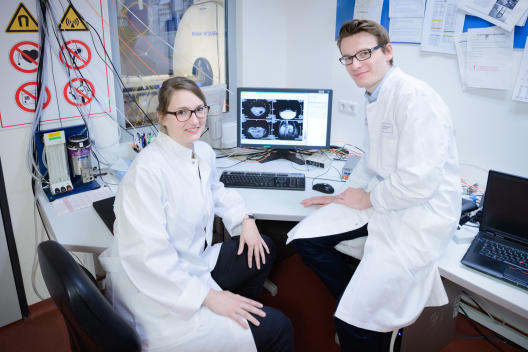50,000 euros for junior researchers

Young researchers at the Cells-in-Motion Cluster of Excellence at the University of Münster are receiving funding for five new pilot projects. Pilot projects are small research projects which junior researchers themselves apply for, implement and are responsible for. What is decisive for funding approval is not only the innovative research idea: the project partners must also be from several different disciplines. “When people from several disciplines work together on one topic, then particularly creative solutions are often the result,” says Prof. Lydia Sorokin, spokesperson of the Cells-in-Motion Cluster of Excellence (CiM). “This is something that young researchers should experience as early as possible in their careers.”
CiM has been supporting independent research carried out by young scientists for two and a half years now. PhD students and post-docs can apply for start-up funding for their projects of up to 10,000 euros for one year. In the current year, the funding volume amounts to almost 50,000 euros.
Two examples of projects: synergies from different disciplines
In one project, PhD student Rebecca Buchholz, Institute of Inorganic and Analytical Chemistry at the University of Münster, and Dr. Max Masthoff, resident at the Department of Clinical Radiology at the Münster University Hospital, analyse contrast agents based on so-called iron oxide nanoparticles (ION). These are widely used in research and clinics as contrast agents in magnetic resonance imaging (MRI). Although ION are considered to be tolerable and safe for humans, not much is known about their biodistribution or any long-term presence yet. The junior researchers’ aim is to specifically detect and quantify newly designed ION using analytical chemistry methods (laser ablation mass spectrometry) and MRI. In this way, hopefully the ION contrast agents can be further characterized and applications for research and clinics can substantially be improved.
In another pilot project, biophysicist Tanumoy Saha from the Institute of Medical Physics and Biophysics and bioengineer Dr. Laura Hockaday Kang from the Institute of Cell Dynamics and Imaging want to understand structures and functions of living cells and to develop so called microfluidic devices. In the field of microfluidics, small amounts of liquid or particles are sufficient to carry out experiments. Such rapid tests are often more efficient than experiments in culture dishes. Microfluidic devices are, however, needed for certain experiments. Tanumoy Saha and Laura Hockaday Kang will be using microfluidic devices to apply controlled temperature, flow, and various chemical treatments to living cells and cell structures like membrane vesicles while holding them in place for imaging. The device designs and fabrication equipment will be shared with other CiM research groups and will help them to overcome the initial cost and technical difficulty of using microfluidics.

